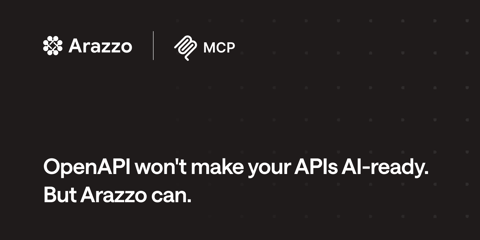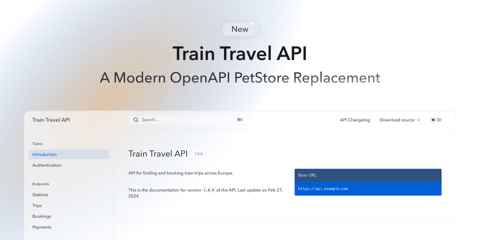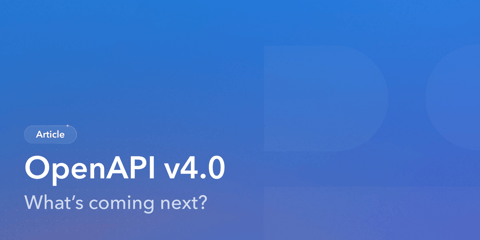Arazzo is a new specification from the OpenAPI Initiative for describing and documenting complex workflows throughout your API which touch multiple operations (a.k.a endpoints). The word “arazzo” means “tapestry” in Italian, which gives you a bit of an idea what it’s about, but let’s let the spec do the talking:
The Arazzo Specification provides a mechanism that can define sequences of calls and their dependencies to be woven together and expressed in the context of delivering a particular outcome or set of outcomes when dealing with API descriptions (such as OpenAPI descriptions).
Much like the Overlays specification we’ve been talking about lately, Arazzo is the creation of a Special Interest Group within the OAI, made up of tooling vendors and experienced API folks who all have the same interests: creating standards which can solve a wide variety of use cases to push the API ecosystem forward, whether that’s testing, documentation, or even AI.
Describing Workflows
APIs are rarely just one request. Maybe you need to log in with OAuth and use a property in the response to grab some data from another endpoint. Perhaps you need to create a few things before you can then fetch something else. It’s rarely clear from the API alone what needs to be done. API Reference Documentation is here to help with a lot of it, but it’s usually not enough by itself, with guides and tutorials picking up the slack.
These can be produced manually, with lots of examples in code or curl showing the various steps, but these can suffer human error. Arazzo lets you create these in a declarative format, glueing operations together with inputs and outputs, referencing relevant parts of the OpenAPI to show how things all fit together.
Example Arazzo Document
If you’d like a quick look at how Arazzo works, here’s a workflow that builds on top of the Train Travel API we published earlier in the year.
arazzo: 1.0.0
info:
title: Train Travel API - Book & Pay
version: 1.0.0
description: >-
This API allows you to book and pay for train travel. It is a simple API
that allows you to search for trains, book a ticket, and pay for it, and
this workflow documentation shows how each step interacts with the others.
sourceDescriptions:
- name: train-travel
url: ./openapi.yaml
type: openapi
workflows:
- workflowId: book-a-trip
summary: Find train trips to book between origin and destination stations.
description: >-
This is how you can book a train ticket and pay for it, once you've found
the stations to travel between and trip schedules.
inputs:
$ref: "#/components/inputs/book_a_trip_input"
steps:
- stepId: find-origin-station
description: Find the origin station for the trip.
operationId: get-stations
parameters:
- name: coordinates
in: query
value: $inputs.my_origin_coordinates
successCriteria:
- condition: $statusCode == 200
outputs:
station_id: $outputs.data[0].id
# there is some implied selection here - get-station responds with a
# list of stations, but we're only selecting the first one here.
- stepId: find-destination-station
operationId: get-stations
description: Find the destination station for the trip.
parameters:
- name: search_term
in: query
value: $inputs.my_destination_search_term
successCriteria:
- condition: $statusCode == 200
outputs:
station_id: $outputs.data[0].id
# there is some implied selection here - get-station responds with a
# list of stations, but we're only selecting the first one here.
- stepId: find-trip
description: Find the trip between the origin and destination stations.
operationId: get-trips
parameters:
- name: date
in: query
value: $inputs.my_trip_date
- name: origin
in: query
value: $steps.find-origin-station.outputs.station_id
- name: destination
in: query
value: $steps.find-destination-station.outputs.station_id
successCriteria:
- condition: $statusCode == 200
outputs:
trip_id: $response.body.data[0].id
- stepId: book-trip
description: Create a booking to reserve a ticket for that trip, pending payment.
operationId: create-booking
requestBody:
contentType: application/json
payload:
trip_id: $steps.find-trip.outputs.trip_id
passenger_name: "John Doe"
has_bicycle: false
has_dog: false
successCriteria:
- condition: $statusCode == 201
outputs:
booking_id: $response.body.id
components:
inputs:
book_a_trip_input:
type: object
properties:
my_origin_coordinates:
type: string
description: The coordinates to use when searching for a station.
my_destination_search_term:
type: string
description: The search term to use when searching for a station.
my_trip_date:
$ref: "#/components/inputs/trip_date"
trip_date:
type: string
format: date-time
This example shows how Arazzo works from a high level, defining a single workflow that shows how to find two stations, a train traveling between them, and shows how to use that data to book a ticket.
It might feel fairly familiar to some of you. It feels to me a lot like Continuous Integration setup for tools like Travis CI, Circle CI, GitHub Actions, etc. It also feels a lot like the tool Strest, which I used to love using for testing multiple interactions, but which has since been discontinued.
Arazzo Syntax
Just like OpenAPI you define a version:
arazzo: 1.0.0
Info Object
Then you define an info to contain relevant metadata about the purpose of this workflow.
info:
title: Train Travel API - Book a Trip
version: 1.0.0
description: >-
This API allows you to book and pay for train travel. It is a simple API
that allows you to search for trains, and book a ticket. This workflow
documentation shows how each step interacts with the others.
Source Descriptions Object
Then we have sourceDescriptions. OpenAPI is an API Description Format, which is stored in the form of an API Description Document, so this section is chance to mention which type of API description format is being used, and point to a specific API description document.
sourceDescriptions:
- name: train-travel
url: ./openapi.yaml
type: openapi
Currently the types supported are openapi and arazzo, with the latter being a chance to extend other workflows, but for now let’s just stick to the main case of working with OpenAPI documents.
The URL can be a relative file, or a full https://... to a document hosted elsewhere, for example:
sourceDescriptions:
- name: train-travel
url: https://bump.sh/bump-examples/doc/train-travel-api.yaml
type: openapi
Workflows
Then we move onto workflows.
workflows:
- workflowId: book-trip
summary: Find train trips to book between origin and destination stations.
description: >-
Find the right train traveling between your origin and destination, then book a ticket.
inputs:
$ref: "#/components/inputs/book_trip_input"
steps:
...
Lots of this is familiar to OpenAPI fans, only instead of paths and operations we have workflows, with a workflowId to give this a unique reference instead of an operationId, the same short summary and long description, and even some $ref which you’ll remember from splitting up your OpenAPI documents.
The inputs being referenced here are a standard JSON Schema, outlining what inputs should be given to this workflow, either by another workflow or by a user interface. These are defined inline or referenced to components.inputs.
components:
inputs:
book_trip_input:
type: object
properties:
my_origin_coordinates:
type: string
description: The coordinates to use when searching for a station.
my_destination_search_term:
type: string
description: The search term to use when searching for a station.
my_trip_date:
$ref: "#/components/inputs/trip_date"
trip_date:
type: string
format: date-time
It would not be hard to imagine a documentation “try it now” interface, or testing tooling providing a UI for these schemas. This could be done with JSON Forms or similar, allowing users to enter values with the type providing a relevant HTML input, and the description being displayed as a label to explain what values should go in there, along with other JSON Schema keywords being leveraged to allow for enum values, or examples.
Steps Object
Now we get into the main chunk of Arazzo: steps.
steps:
- stepId: find-origin-station
description: Find the origin station for the trip.
operationId: get-stations
parameters:
- name: coordinates
in: query
value: $inputs.my_origin_coordinates
successCriteria:
- condition: $statusCode == 200
outputs:
station_id: $outputs.data[0].id
Here the find-origin-station is a uniquely named step within the workflow, which defines a name that can be referred to elsewhere in the document. The operationId is referring to an operation inside the OpenAPI document, and the parameters match up with parameters in that operation.
The parameters are similar to OpenAPI parameters, where in can be path, query, header, cookie. The new thing here is value, which can takes either a hard coded value, or refer to a workflow input defined earlier.
Steps can define a successCriteria, where all criteria must be passed in order to be considered a success. At the most basic level this should be checking for a successful HTTP status code, but can do any comparison using the runtime expression syntax to grab a value and compare for any basic literals, operators, and loose comparisons on available variables like $url, $method, $response.body, etc. You can even user operators to do OR.
- condition: $statusCode == 200 || $statusCode == 201
By default the simple conditions are used, but you can get more advanced with a context attribute to set the variable being used, then using type: regex for the condition.
- context: $statusCode
condition: '^200$'
type: regex
If the responses are JSON or XML you can get even more advanced with JSONPath or XPath.
- context: $response.body
condition: $[?count(@.data) > 0]
type: jsonpath
The last part of this step example shows output, which takes values from various bits of the step and makes them available to other steps.
outputs:
station_id: $outputs.data[0].id
Now other steps can refer to this output property for their inputs.
- stepId: find-trip
description: Find the trip between the origin and destination stations.
operationId: get-trips
parameters:
- name: date
in: query
value: $inputs.my_trip_date
- name: origin
in: query
value: $steps.find-origin-station.outputs.station_id
- name: destination
in: query
value: $steps.find-destination-station.outputs.station_id
successCriteria:
- condition: $statusCode == 200
outputs:
trip_id: $response.body.data[0].id
This next step shows a mixture of parameters being sent to the next operation using a mixture of workflow inputs, and values defined as output from the steps before it.
Chaining together workflow inputs and values from other steps you can create some amazing workflows, and have multiple workflow documents for different use-cases to describe all the important workflows that need to be documented and tested for your API.
Tips
Extending Other Workflows
if you find there are certain operations, or groups of operations, getting repeated over and over again, you can make a step which runs a workflow instead. Instead of referencing an operationId you can define another workflow, and reference that workflowId in a step.
- stepId: find-origin-station
description: Find the origin station for the trip.
operationId: get-stations
parameters:
- name: coordinates
in: query
value: $inputs.my_origin_coordinates
successCriteria:
- condition: $statusCode == 200
outputs:
station_id: $outputs.data[0].id
- stepId: find-origin-station
description: Find the origin station for the trip.
workflowId: find-station # instead of operationId
parameters:
- name: coordinates
value: $inputs.origin_coordinates
# no `in` needed
successCriteria:
- condition: $statusCode == 200
outputs:
station_id: $outputs.data[0].id
The main difference here is that you no longer need to specify where parameters are going, because they are then used as inputs in that workflow. The rest is the same.
Add Operation IDs to OpenAPI
Using an operationId is generally considered good practice because they’re used to make clean URLs for documentation, and help generate cleaner SDKs, but Arazzo creates a new reason for using them.
If an OpenAPI operation does not have an operationId you are left using an operationPath which is a much uglier syntax, which will also break if paths change.
steps:
- operationPath: '{$sourceDescriptions.petstoreDescription.url}#/paths/~1bookings~1{bookingId}/get'
Remember how to escape slashes in this syntax is horrendous, so before you start using Arazzo properly it would be a good idea to get all your OpenAPI documents ready by getting sensible consistent operationId into them.
$ref vs reference
There’s a new way to reference objects in Arazzo, and that’s the reference keyword, different from the $ref keyword you might be used to from OpenAPI.
steps:
- stepId: find-pet
operationId: findPetsByStatus
parameters:
- name: status
in: query
value: "available"
- reference: $components.parameters.page
value: 1
This “expression based referencing mechanism” uses the same runtime expressions that we were using for inputs, outputs, and criteria and is available in the following parts of Arazzo:
- successActions
This is different to the the JSON Schema $ref keyword which uses JSON Pointer syntax, which might beg the question… why are there two different approaches to referencing things?
Well, there has been confusion in OpenAPI as it attempted to completely align its schema objects with JSON Schema, which is a very long story we can skip over here. Basically there are two different semantics for $ref depending on where it is, and they’re really subtle things like whether or not it can have other properties next to it…
To maintain compatibility with JSON Schema whilst also creating functionality necessary for this new workflow specification, the authors of Arazzo decided to make a new reference keyword that would work as it needed to and make it available in limited locations.
Tooling Support
As with any new specification, the question is: what tools actually support this? Multiple tooling vendors are working on supporting this new specification. It’s also in the Bump.sh Roadmap. Interested in it, and want us to prioritize it? Drop us your contact and let’s chat.
In the meantime there is an early prototype of a test runner similar to the Strest tool I mentioned, called arazzo-runner. This can help test the concept and help you build out some of the workflows before better tooling supports comes along to make it easier.



